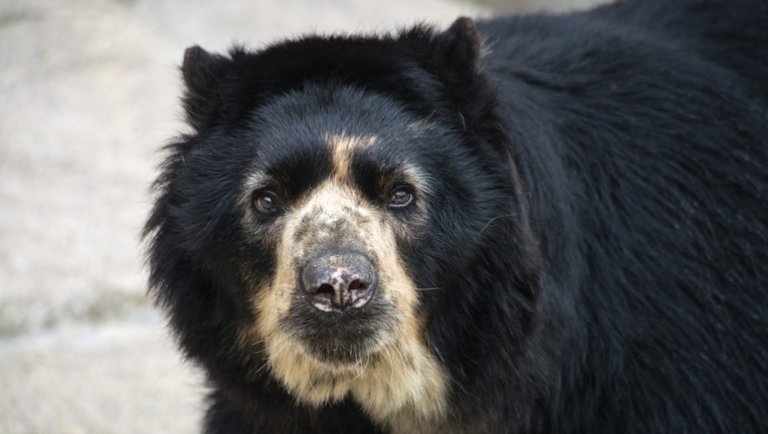Drought Pressure Mounts In South Australia: The Role Of Kangaroo Populations

Table of Contents
The Impact of Drought on Kangaroo Populations
The prolonged drought in South Australia has severely impacted kangaroo populations, creating a cascade of negative effects. The primary impact stems from reduced food availability. The usual abundance of grasses and shrubs vital to their diet has drastically diminished, leading to widespread malnutrition and starvation. Simultaneously, water scarcity forces kangaroos to expend significant energy searching for dwindling water sources, further weakening their already compromised state. This vulnerability increases their susceptibility to disease and parasites, adding another layer of pressure on already stressed populations.
- Decreased birth rates and increased mortality rates: Joey survival rates plummet as mothers struggle to produce sufficient milk, resulting in fewer offspring and higher mortality rates among young kangaroos. Adult kangaroo mortality also increases due to starvation and disease.
- Increased competition for scarce resources: The dwindling resources intensify competition among kangaroos, leading to increased aggression and ultimately, more deaths due to starvation or injuries sustained during fights.
- Changes in kangaroo grazing patterns: Desperate kangaroos may overgraze remaining vegetation patches, potentially accelerating land degradation and reducing the long-term capacity of the land to support wildlife.
- Increased vulnerability to predation: Weakened kangaroos become easier prey for predators, further contributing to population decline.
While precise figures are difficult to obtain due to the vast and diverse landscape, anecdotal evidence and reports from wildlife agencies suggest significant population declines in several regions of South Australia affected by the severe drought. Further research and monitoring are crucial to quantify the full impact.
Kangaroos' Contribution to Drought-Affected Landscapes
Kangaroos play a complex role in both healthy and drought-stressed ecosystems. While often perceived as solely contributing to overgrazing, their impact is multifaceted.
- Overgrazing in drought conditions: The debate surrounding kangaroo grazing pressure during drought is complex. While high kangaroo densities can exacerbate overgrazing in already stressed environments, their impact is often relative to the overall carrying capacity of the land and the severity of the drought. Sustainable management strategies aim to balance kangaroo numbers with the land's ability to recover.
- Nutrient cycling: Kangaroo dung acts as a vital fertilizer, enriching the soil with nutrients. Even during drought, their dung contributes to soil health, which is crucial for future vegetation regrowth. This natural nutrient cycling plays a crucial role in the long-term recovery of the ecosystem.
- Seed dispersal: Kangaroos contribute significantly to seed dispersal, facilitating plant regeneration and maintaining biodiversity. Their movements across the landscape help spread seeds, even during drought, ensuring the long-term survival of plant species crucial for the ecosystem.
Economic Impacts: Balancing Conservation and Agriculture
The drought’s economic impact extends beyond the ecological realm, significantly affecting farmers and their livelihoods. The competition for dwindling resources creates conflict between farmers and kangaroos.
- Competition for grazing land: Kangaroos and livestock compete for the same scarce pasture, resulting in reduced carrying capacity for livestock and decreased income for farmers.
- Crop damage: Kangaroos can cause significant damage to crops, leading to reduced yields and substantial economic losses for farmers.
- Culling programs: Farmers often advocate for kangaroo culling as a means to mitigate the impact on their livestock and crops. However, culling programs raise ethical concerns and must be implemented responsibly, with careful consideration of the long-term ecological consequences. Sustainable strategies should be prioritized over mass culling.
- Government policies and support: Government policies and financial support for drought-affected farmers and conservation efforts are crucial for navigating this complex situation. Effective policy needs to balance the needs of farmers with the importance of maintaining biodiversity.
Sustainable Management Strategies
Addressing the drought pressure in South Australia requires a multi-pronged approach focusing on sustainable management strategies.
- Controlled culling with strict regulations and monitoring: Where necessary, controlled culling can be considered, but only under strict regulations and rigorous monitoring to avoid significant negative ecological impacts.
- Improved land management practices: Sustainable grazing practices, rotational grazing, and improved pasture management can help support both kangaroo populations and livestock production.
- Investment in drought-resistant vegetation: Investing in research and implementation of drought-resistant vegetation can help improve the resilience of the ecosystem and reduce competition for scarce resources.
- Public awareness campaigns: Raising public awareness about the complex issue of drought, its impact on kangaroo populations, and the importance of sustainable management is crucial for securing broader support for effective conservation and agricultural practices.
Addressing Drought Pressure in South Australia and the Role of Kangaroo Populations
The drought in South Australia highlights the complex interconnectedness of ecological and economic factors. The impact on kangaroo populations is significant, impacting both the ecosystem and the livelihoods of farmers. Sustainable management strategies, balancing conservation with agricultural needs, are crucial for mitigating the impact of drought and creating a more resilient future. Understanding the intricate relationship between drought pressure and kangaroo populations in South Australia is crucial for developing effective solutions. Learn more and get involved in protecting our environment and supporting sustainable practices for a healthier future. Contact your local conservation organization or government representative to express your concerns and support effective drought management strategies.

Featured Posts
-
 Gazze Den Kanser Hastasi Cocuklar Uerduen De Tedavi Goerecek
May 29, 2025
Gazze Den Kanser Hastasi Cocuklar Uerduen De Tedavi Goerecek
May 29, 2025 -
 Brisbane Mayor Withdraws Q Music Support After Slamming Award Winning Musician
May 29, 2025
Brisbane Mayor Withdraws Q Music Support After Slamming Award Winning Musician
May 29, 2025 -
 Toothless And Red Death Size Difference Revealed In New How To Train Your Dragon Poster
May 29, 2025
Toothless And Red Death Size Difference Revealed In New How To Train Your Dragon Poster
May 29, 2025 -
 Moto Gp Sprint Alta Probabilidad De Riesgo Baja Probabilidad De Recompensa
May 29, 2025
Moto Gp Sprint Alta Probabilidad De Riesgo Baja Probabilidad De Recompensa
May 29, 2025 -
 Lakasodban Rejlo Kincs Szazezreket Erhetnek Ezek Az Aprosagok
May 29, 2025
Lakasodban Rejlo Kincs Szazezreket Erhetnek Ezek Az Aprosagok
May 29, 2025
Latest Posts
-
 Resultats Bts 2025 Dates Cles Et Informations Importantes
May 30, 2025
Resultats Bts 2025 Dates Cles Et Informations Importantes
May 30, 2025 -
 Bts Reunion Teaser Comeback Speculation Ignites Army
May 30, 2025
Bts Reunion Teaser Comeback Speculation Ignites Army
May 30, 2025 -
 Bts 2025 Quand Auront Lieu Les Epreuves Et La Publication Des Resultats
May 30, 2025
Bts 2025 Quand Auront Lieu Les Epreuves Et La Publication Des Resultats
May 30, 2025 -
 Fans React To Bts V And Jungkooks Muscular Post Military Photos
May 30, 2025
Fans React To Bts V And Jungkooks Muscular Post Military Photos
May 30, 2025 -
 Bts 2025 Dates Des Examens Et Annonce Des Resultats
May 30, 2025
Bts 2025 Dates Des Examens Et Annonce Des Resultats
May 30, 2025
